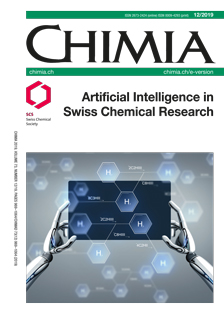Data-driven Chemical Reaction Prediction and Retrosynthesis
DOI:
https://doi.org/10.2533/chimia.2019.997PMID:
31883550Keywords:
Artificial intelligence, Organic chemistry, Reaction prediction, RetrosynthesisAbstract
The synthesis of organic compounds, which is central to many areas such as drug discovery, material synthesis and biomolecular chemistry, requires chemists to have years of knowledge and experience. The development of technologies with the potential to learn and support experts in the design of synthetic routes is a half-century-old challenge with an interesting revival in the last decade. In fact, the renewed interest in artificial intelligence (AI), driven mainly by data availability, is profoundly changing the landscape of computer-aided chemical reaction prediction and retrosynthetic analysis. In this article, we briefly review different approaches to predict forward reactions and retrosynthesis, with a strong focus on data-driven ones. While data-driven technologies still need to demonstrate their full potential compared to expert rule-based systems in synthetic chemistry, the acceleration experienced in the last decade is a convincing sign that where we use software today, there will be AI tomorrow. This revolution will help and empower bench chemists, driving the transformation of chemistry towards a high-tech business over the next decades.Downloads
Published
2019-12-18
How to Cite
[1]
V. H. Nair, P. Schwaller, T. Laino, Chimia 2019, 73, 997, DOI: 10.2533/chimia.2019.997.
Issue
Section
Scientific Articles
License
Copyright (c) 2019 Swiss Chemical Society

This work is licensed under a Creative Commons Attribution-NonCommercial 4.0 International License.







